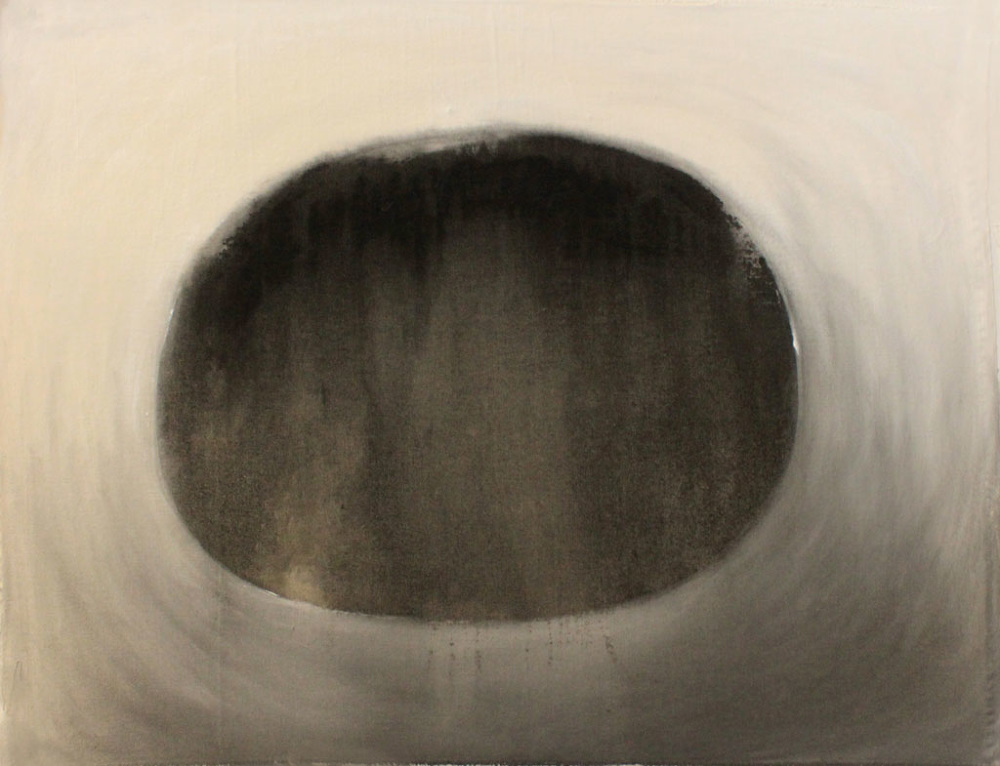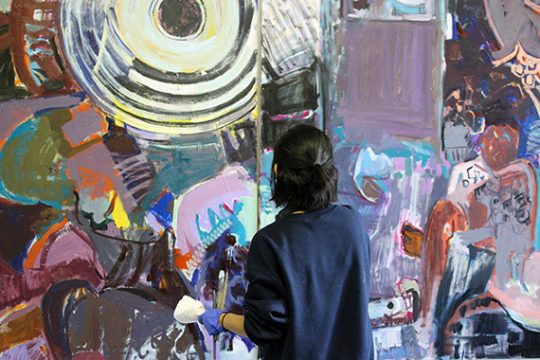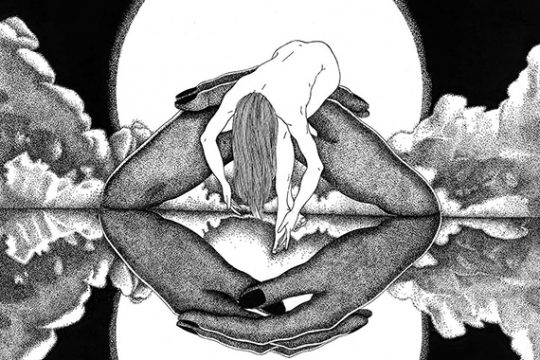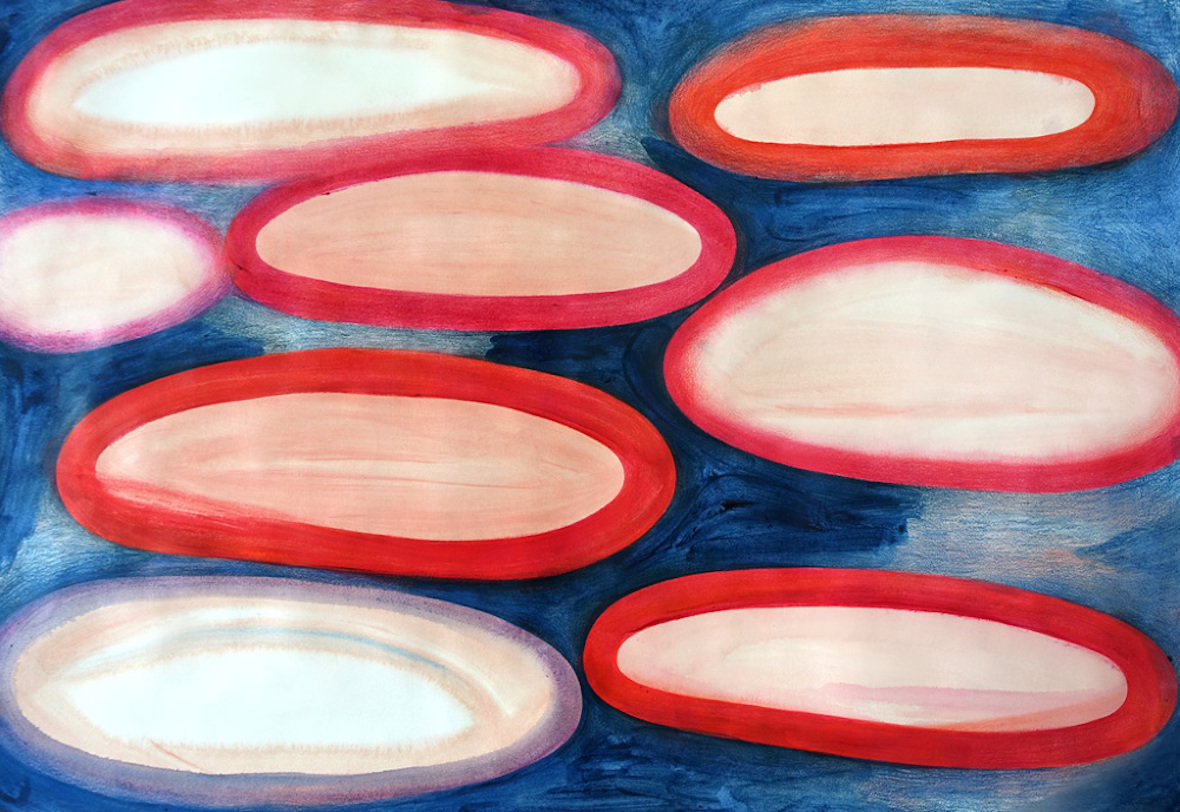
Shanghai-based artist and designer Tan Chengyan paints only a handful of subjects: women’s bodies, mushrooms, circles, and holes. Simple shapes fit her abstract style. She views her art as a balancing act between emotion and logic, and a desire for balance likewise runs through her life, both as she alternates between art and design and as she selects the tools to produce her work.
上海艺术家和设计师谭成彦笔下的主题——女性身体、蘑菇、圆圈和洞——寥寥可数,与她的抽象派风格相得益彰。艺术对她来说,是感性与理性之间的平衡,也是贯穿了她的生活的渴求:无论是艺术和设计之间的思维转换,或是具体到绘画创作时的工具选择。
Water and ink represent her emotional side. The first thing she does when creating a new painting is to dampen the paper with water and draw the main shapes in ink. Then she watches as the ink bleeds onto the wet surface. “The procedure of brushing paper with water is particularly important—it leads me to a state beyond consciousness,” says Tan. Seeing ink merging with water, her mind enters a zen space, and that’s when the shapes start to materialize.
Then her logical side, represented by acrylic, gouache, and colored pencils, takes over. She draws the shapes with acrylic or gouache on top of the initial layer and waits until their edges blur. Only at that point does she have a clear idea about the painting’s subject. She then adds details and clarifies subjects with colored pencils.
Underneath these soft and feminine shapes lies a slow process of creation that she describes as “primitive and organic,” and which gives her works their vital simplicity. These themes are also part of an organic process.
水和墨如同她感性的一面。作画时,她会先把画布和纸全部涂湿,用墨在上面做出基本图形,看着水和墨互相交融,形成自己的模样,“上水这一步对我来说特别重要,因为它是让我进入到 ‘意识外’ 状态最关键的一步。”当墨与水相互交融,她慢慢沉浸其中,画面便开始在脑中成形。
而丙烯、水粉和彩色铅笔则代表了她理性的一面。用丙烯或水粉在第一层上画出形状后,随着图形边缘慢慢晕开,她脑中才会出现对主题的定义。最后则会用彩色铅笔铅勾线,去以凸显图形并让主题更加清晰。
她的画作常由柔软、婀娜的形状组成。其中循序渐进的创作过程——用她自己的话说是 “原始、有机的”——带来了简洁、充满生命力的效果。而这个主题的成形也是一个有机的过程。
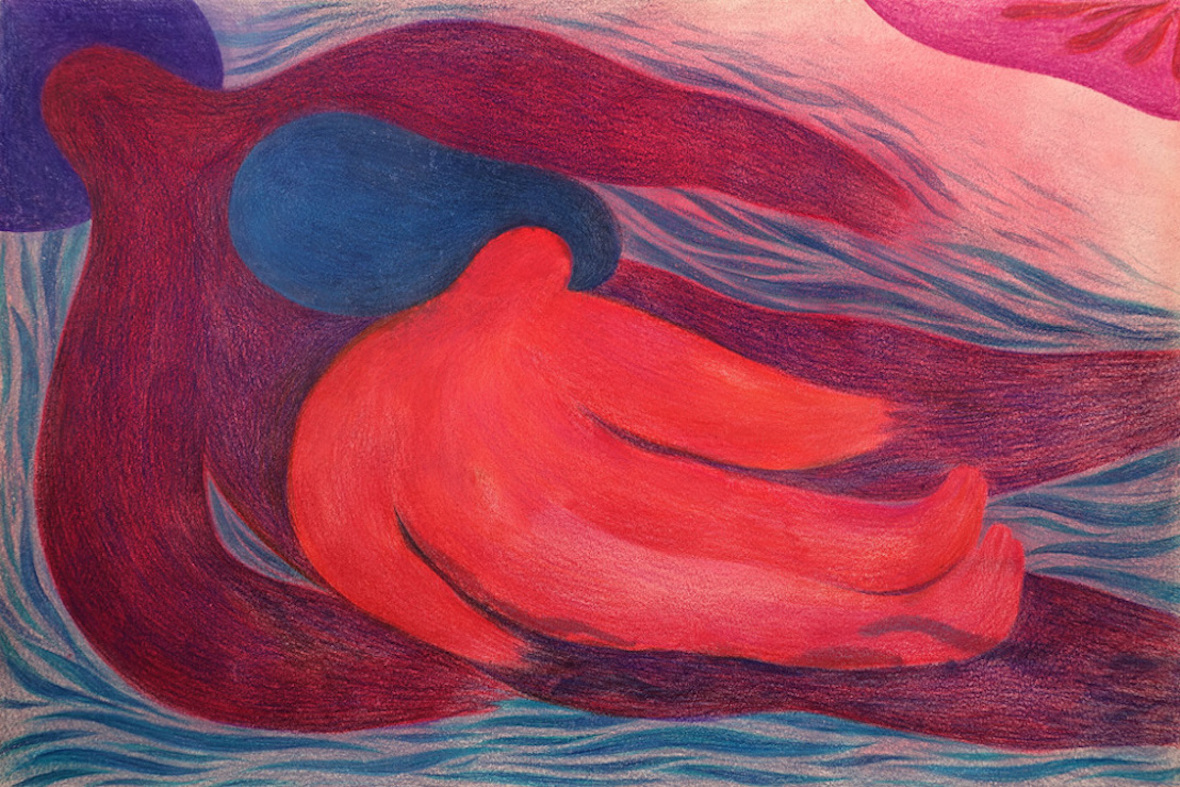
Tan first began drawing circular, hole-like shapes in high school, though at the time she didn’t know what prompted them. In middle school, she had struggled under the intense pressures of academic competition, and when she was admitted to an arts high school, the relaxed, free environment made her feel as though “she had suddenly opened up.”
从高中开始,她就在纸上记录这些图形,虽然当时并不知道特别原因。在那之前,她就读的是普通初中,常常被排名和学业的压力闷得透不过气,而在高中考上了艺术院校后,自由和放松的环境让她感觉 “自己一下子就释放了”。

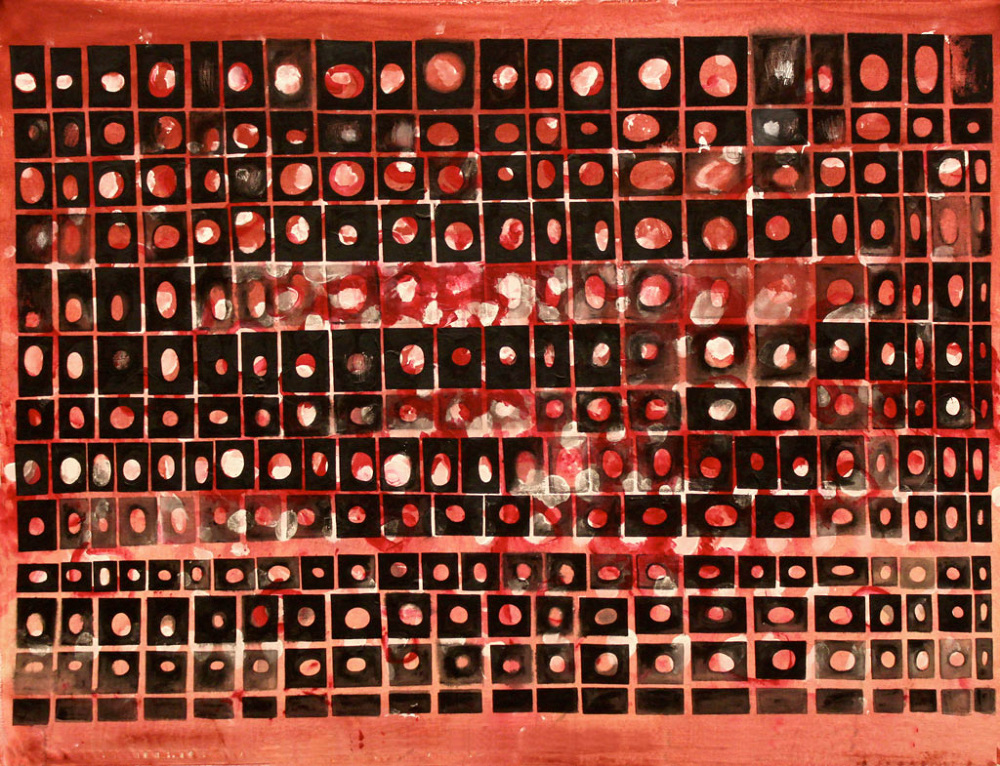
Looking back, Tan thinks her adolescent years set the stage for her later work. A budding sexuality left her at times feeling lost and at times full of hot-blooded passion: “I just felt an energy I needed to release. What was it? I don’t know, but on the paper before me, I saw those forms.”
College was another dark period, and Tan took refuge in the library, where she discovered, in art books and journals, the work of pioneering artists like Yayoi Kusama and Georgia O’Keeffe, who profoundly influenced her approach to artistic expression.
回望过去,她觉得对性懵懵懂懂,时而失落、时而满血复活的青春期,奠定了她后来创作主题的雏形——“觉得心中有种能量想要释放出来,那是什么样的东西呢?我不知道,但就这样自然而然地出现在了我面前的纸上。”
大学对于她来说,是另一个黑暗时期。于是,图书馆变成了谭成彦最爱去的地方,她也在当时大量接触了草间弥生(Yayoi Kusama)、乔治亚·欧姬芙(Georgia O’Keeffe)等以女性主题闻名的先锋艺术家家的作品。这对她自身的艺术表达方式造成了深远的影响。
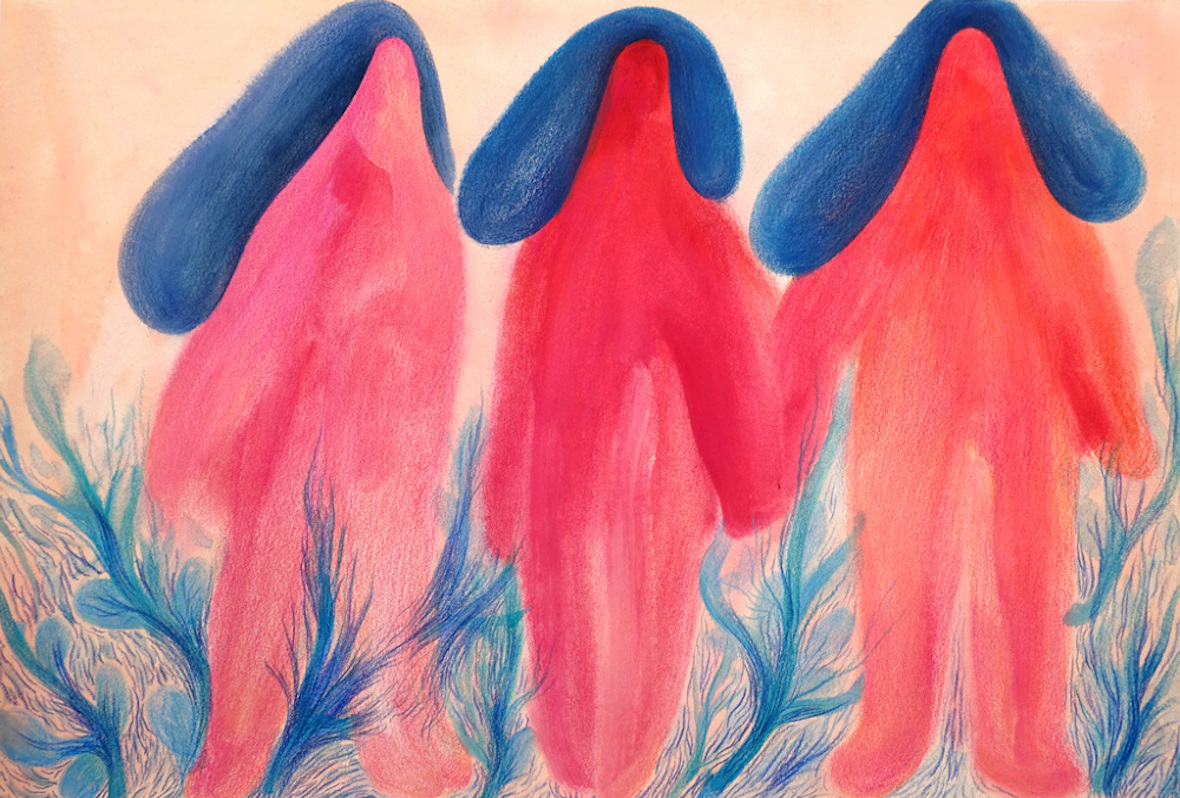
A turning point came in 2009, when, after graduating from college, Tan decided to move to the Netherlands to pursue a master’s in fine arts. Not only was this her “most prolific” period, it also, more importantly, helped her give expression to the forms she had been seeing in her mind all those years.
“Women’s bodies, mushroom shapes, holes, and circles: all these connect me to energy of the universe. When I paint these shapes, I always feel I’m elevated to a higher spiritual plane beyond material things,” she says, “I start to think that a lot of problems in my life aren’t really problems, because when I enter that level I’m more tolerant of everything that occurs in life.”
2009年可以说是她艺术创作的转折点,当时大学毕业后,谭成彦选择了去荷兰就读艺术硕士。这段时间不仅是她最“多产”的时候,也让长驻脑中的图形一一呈现。
“女性的身体、蘑菇形状、洞和圆圈接通我和宇宙能量。每当创作这些图形我就感觉自己被带到了超越物质层面的更深层的精神空间” 谭成彦说,“我会开始觉得现实中的很多问题都不再是问题了,因为到了那个层次之后,对生活中的一切都变得更加包容。”
Do the female forms she creates represent herself, then? Tan doesn’t think so. “It would be too restrictive to say this is me. Through the female shapes I paint, I want to explore a path to the universe.”
In terms of life, if art is her emotional side, her logical self comes forward through design. In 2017, Tan and her partner, Carmelo Ferreri, founded the design studio Melo & Yan, which specializes in branding and illustration. In her opinion, and in her practice, art and design are not opposed to one another, but rather nourish each other. “Design reflects the times, and can also inspire my art. It’s a balance,” she says. That’s also her attitude toward art: “It’s only good when all elements reach a balance.”
那么,画中的女性代表了她自己吗?她并不这么觉得:“如果说这是自己,有点太限制了,因为我想通过创作的女性图像探索通往宇宙的通道。”
在生活层面,如果说她在艺术创作时是感性的,那么她理性的自己则会在做设计时出现。谭成彦在 2017 年和另一半 Carmelo Ferreri 成立 Melo & Yan 设计工作室,专注品牌设计与插画。在她眼里,艺术与创作并不矛盾,而是有着相互滋养的关系:“设计更加能体现时代的信息,也可以给创作带来灵感。就是个平衡,” 这也是她对画的态度,“一张画,能达到平衡才是比较优秀的作品”。
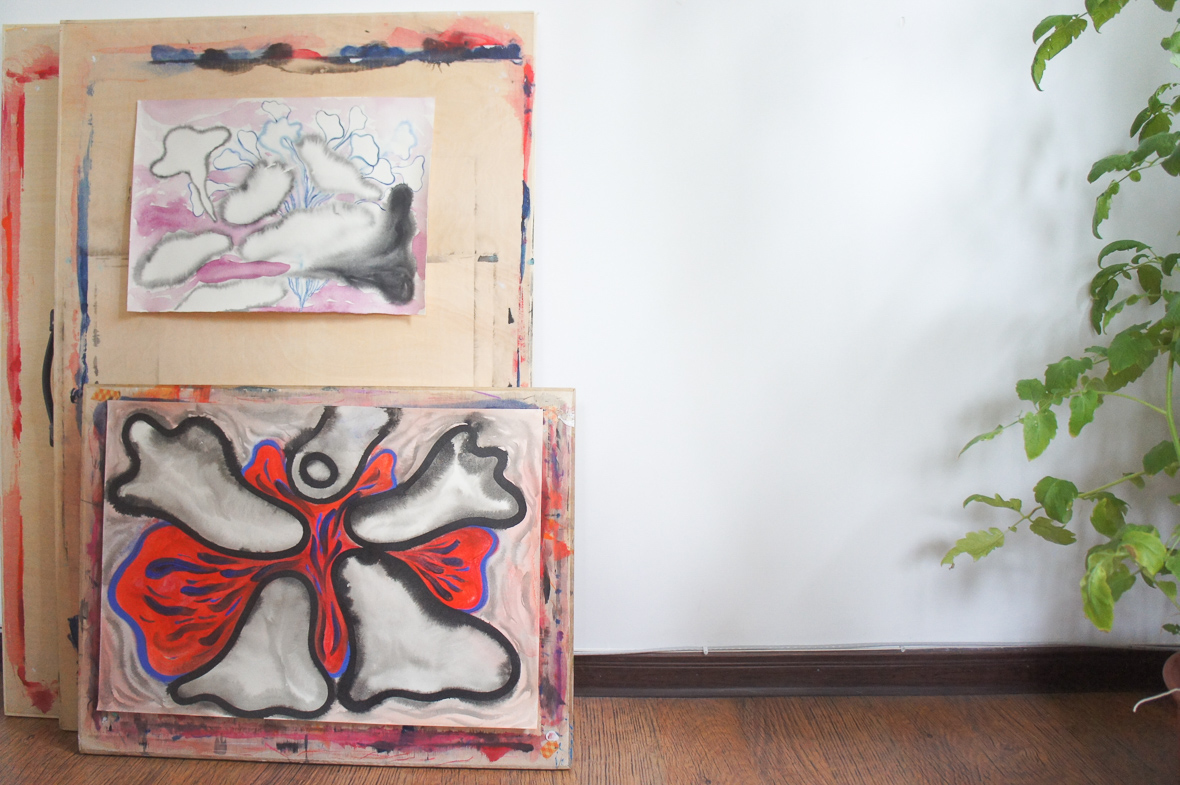
Website: chengyantan.com
Instagram: @chengyan_tan
Contributor & Photographer: Jiang Yaling
Additional Images Courtesy of Tan Chengyan






